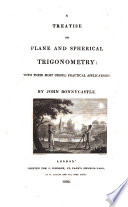 | John Bonnycastle - Trigonometry - 1806 - 464 pages
...others were taken. In the second method, having stated the proportion, according to the proper rule, multiply the second and third terms together, and divide the product by the first, and the quotient will be the fourth term required, for the natural numbers. Or, in working by logarithms,... | |
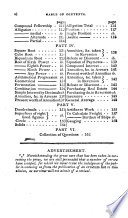 | James Thompson - Arithmetic - 1808 - 176 pages
...term ; and that which is of the same name or quality with the answer required, the second term. Then multiply the second and third terms together, and...by the first. The quotient will be the fourth term or answer, in the same name or denomination as the second term was left in. Note — The first term... | |
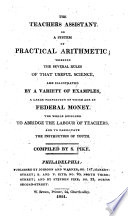 | Arithmetic - 1811 - 210 pages
...DIRECT PROPORTION. RULE. « Prepare the given terms, if necessary, and state them as in whole numbers ; multiply the second and third terms together, and divide the product by the first. Or, / . Invert the dividing term, and multiply the three tejgms together, as in Multiplication. * EXAMPLES.... | |
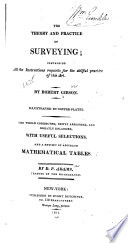 | Robert Gibson - Surveying - 1811 - 580 pages
...as much greater, or less than the third, as the second term is greater, or less than the first, then multiply the second and third terms together, and divide the product by the first term, and the quotient will be the answer ; — in the same denomination with the third term. EXAMPLES.... | |
 | Oliver Welch - Arithmetic - 1812 - 236 pages
...denomination ; and reduce the middle number, or term, into the lowest denomination mentioned : then multiply the second and third terms together, and...the product by the first ; the quotient will be the answer, or fourth term sought ; and always will be of the same depomiiuition as that of the middle... | |
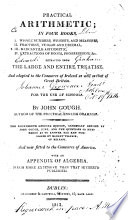 | John Gough - Arithmetic - 1813 - 358 pages
...fraction must be of th« same name or kind, and reduced to fractions of the same name or denominator. Multiply the second and third terms together and divide the product by the first; the quotient is the fourth term required ; due regard being had to the rules laid down for multiplying, dividing... | |
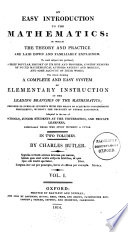 | Charles Butler - Mathematics - 1814 - 540 pages
...in either. Likewise the second term must be reduced to the lowest denomination mentioned in it. IV. Multiply the second and third terms together, and...the first ; the quotient will be the fourth term, or answer, in the same denomination into which the second term was reduced. arc the two means, and... | |
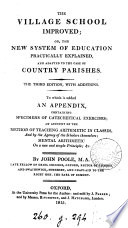 | John Poole - 1815 - 170 pages
...namely, shillings. Q. Having attended to the three given terms, what do you proceed to do next? — A. I multiply the second and third terms together, and divide the product by the first. Q. Is not this last mentioned operation the main rule in the Rule of Three Direct?— A. Yes. Q. In... | |
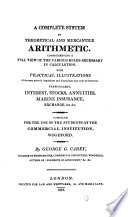 | George G. Carey - Arithmetic - 1818 - 602 pages
...means. Hence results the following rule for finding a fourth proportional to three given numbers. BULE. Multiply the second and third terms together, and divide the product by the first, and the quotient is the answer, or fourth proportional. EXAMPLE I. Required a fourth proportional to... | |
 | Robert Patterson - Arithmetic - 1819 - 174 pages
...we have the equation ad = be, and this divided by a, will give d = —. In words — multiply the a second and third terms together, and divide the product by the first, and the quotient will be the fourth, or term required. II. IN ALLIGATION ALTERNATE. Let a, A, = the... | |
| |